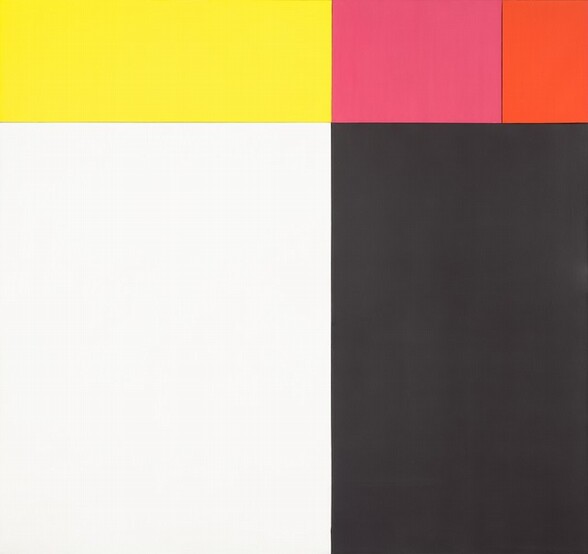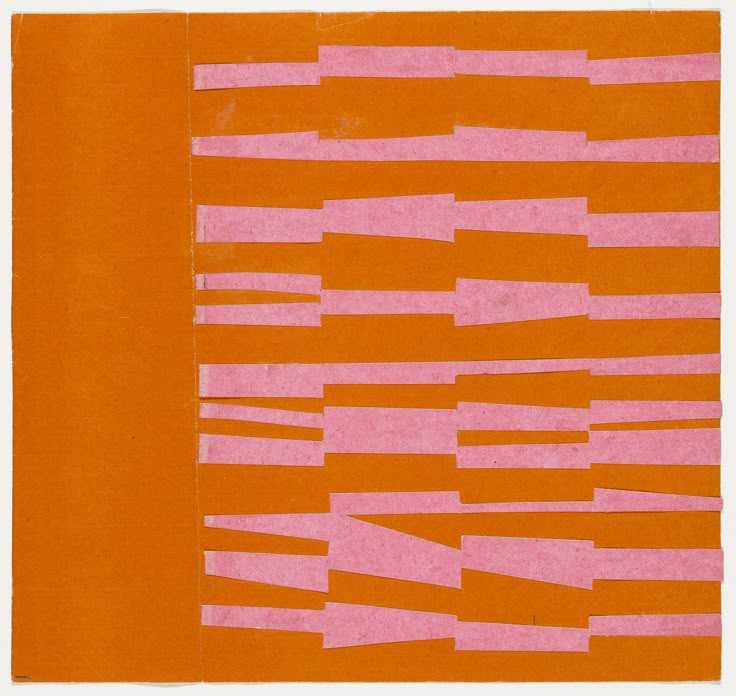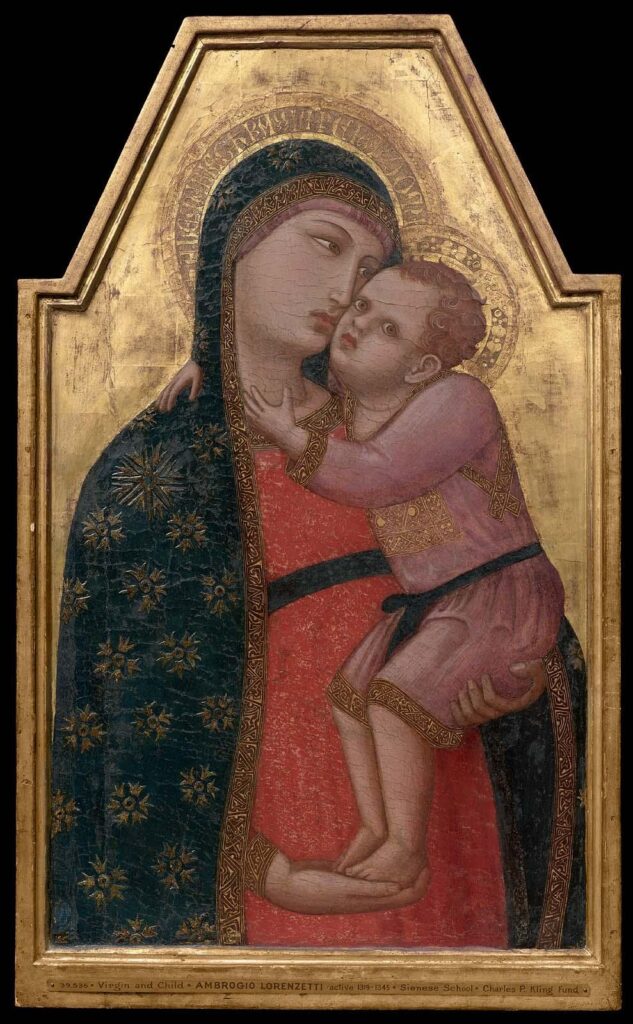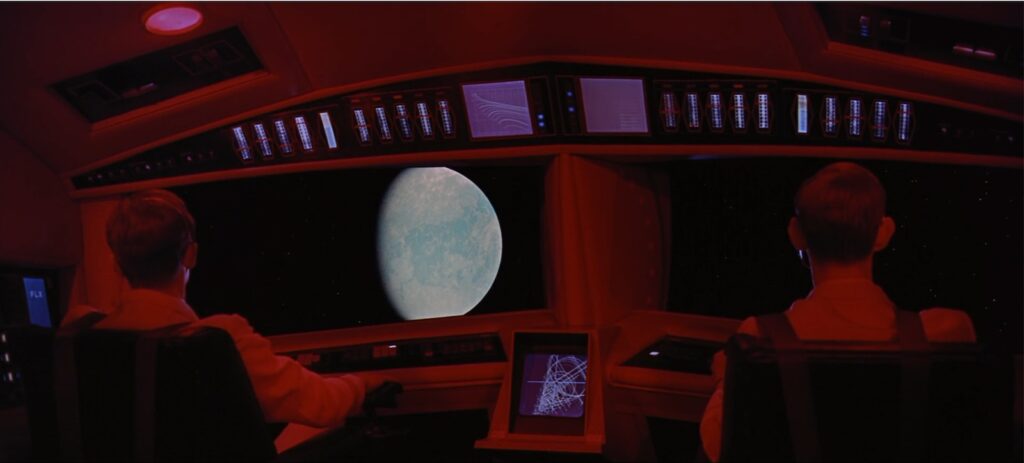
I was listening to a recording of Ellsworth Kelly’s 1999 Elson Lecture at the National Gallery of Art, and I have some questions. Some could probably be answered by a video of the lecture—more of a conversation, with curator Marla Prather—or with a review of Kelly literature I don’t have.
Kelly talked about his interest in an unusual color combination, orange & pink, which he used in Tiger (1953), after using it as found colors in Painting for a White Wall (1952). Readers know this already.

But it’s older than that. In 1999, Kelly told of a 1951 meeting with Jean Arp to discuss his (Kelly’s) Guggenheim Fellowship application, a proposal to publish an artist book. Arp, a chance operations-based collagist who Kelly had asked for a reference, was baffled by the pink/orange combo in one chance operations-based collage in the book.

Kelly mentioned that “many years later,” at the National Gallery in London, he saw Lorenzetti, he said, “and suddenly it dawned on me,” that he had spent an entire summer (in 1947) at the Museum School in Boston, copying a pink & orange Virgin & Child by Lorenzetti at the Museum of Fine Arts. And that this was the original source.
Kelly did not mention that copying a Lorenzetti was included in the catalogue for his 1996 Guggenheim retrospective. Or that the book proposal collages were only shown for the first time in the 1996. Or that the the Harvard Art Museums finally published his book, Line Form Color, in 1999. What I want to know is, where is this Ellsworth Kelly Lorenzetti?

The other puzzle remains unsolved. Kelly was talking about beginning in 1969 to make paintings whose curved edge is a fragment of a circle. After misremembering it as the Apollo moon landing itself, Kelly recalled watching Stanley Kubrick’s 2001: A Space Odyssey:
When they’re in a spacecraft circling the moon, they had windows in this parlor, and you looked out the window, and you saw this. And I had already done some small paintings like this, and I said, “Oh my God, there’s one of my paintings!” And I wonder if anyone else picked that up, because it just hit me like that.
Reader, I just scrubbed through 2001, and did not pick that up, and it did not just hit me like that. The fragment of the curve of a circle in the movie is rarely the horizon of moon, and most often the sunlit half of the earth. But it occurs in several—even many— shots before and after the moon shuttle; if anything, the shuttle windshield view is the most fleeting. I believe that shape is called a spherical wedge, and I do not know if Kelly made and showed such work in the mid-60s that Kubrick might have been influenced by. My suspicion is he was influenced by the sun shining on half the earth at a time. But this story appears nowhere else that I can find.
